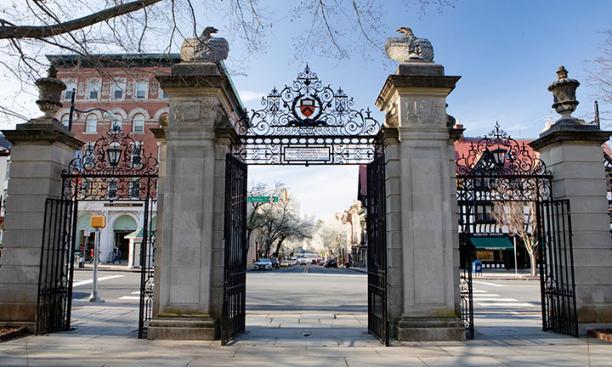
Princeton is exploring the creation of a continuing-education or outreach program that would grant credits or degrees and extend the University’s educational mission to underserved students, President Eisgruber ’83 announced in September. Eisgruber also outlined the administration’s aims to increase diversity among faculty, researchers, and contractors as part of the University’s effort to address systemic racism.
Peer institutions already have continuing-education and outreach programs, Eisgruber noted. “This kind of teaching initiative might simultaneously help to address the effects of systemic racism and expand the horizons of our scholarly and educational community,” he wrote, adding that online learning “adds to the tools” the University might employ. Provost Deborah Prentice is leading the effort to explore potential programs. Eisgruber said any program would require support from the faculty and trustees.
The president announced in June that he had asked his cabinet to suggest actions “to identify, understand, and combat systemic racism within and beyond the University.” Proposals were due Aug. 21, and Eisgruber outlined the initial findings in the first week of September. He wrote that many of the items were “unglamorous, focused not on flashy symbols but on the nuts and bolts of University management.”
Topping the list was an effort to expand diversity among tenured and tenure-track faculty, with a goal of increasing the number of tenured or tenure-track faculty members from underrepresented groups by 50 percent over five years. In 2019–20, 4 percent of tenured and tenure-track faculty were Black and 4 percent were Hispanic, according to the University’s Diversity Dashboard.
Additional diversity initiatives will aim to address postdoctoral researchers, non-tenured faculty (lecturers and visiting faculty), graduate students, and vendors and contractors who work with the University.
Since 2016, the Council of the Princeton University Community’s Committee on Naming has worked to advise the trustees on naming buildings or spaces on campus to “bring a more diverse presence to the campus.” Eisgruber’s September announcement expanded that work, asking an ad hoc committee to recommend principles to govern changes in naming and other campus iconography.
Eisgruber also pledged support for ongoing anti-racism and diversity-related professional development and educational opportunities on campus.
To promote accountability, the University plans to collect and publish data on the new initiatives, including an annual diversity, equity, and inclusion report.
